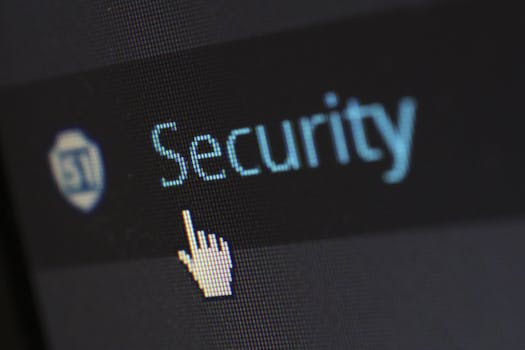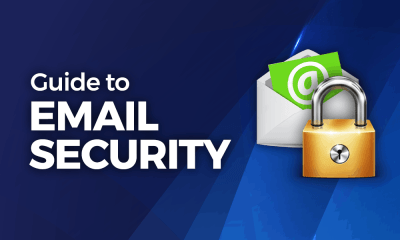In the digital age, cybersecurity is not an option, it’s a necessity. Welcome to our guide on the evaluation of cybersecurity, the first line of defense in the ever-evolving battle against cyber threats. The importance of understanding, assessing, and managing cybersecurity risks cannot be overstated. As an essential component of any successful business strategy, cybersecurity ensures the protection of your valuable digital assets.
In this guide, you will learn about cybersecurity evaluation, an essential process that involves identifying, analyzing, and evaluating the potential risks that could compromise your organization’s information security. Understanding cybersecurity evaluation allows you to make informed decisions about how to best protect your organization from potential cyber threats.
Cybersecurity evaluation is not just about identifying potential threats; it’s about understanding the value of your information and prioritizing your assets accordingly. It’s about recognizing vulnerabilities and implementing the necessary controls to mitigate risk. It’s about continual assessment and adaptation to the changing cyber risk landscape.
In partnership with Upper Echelon Technology Group, an expert in personalized IT Managed Services, we are committed to helping you navigate the complexities of cybersecurity evaluation. This guide will arm you with the knowledge you need to safeguard your business effectively.
Stay tuned as we delve deeper into the importance of cybersecurity evaluation, the steps involved in performing a cybersecurity risk assessment, the tools available for cybersecurity evaluation, and how the standards set by ISO 27001 can guide your cybersecurity efforts.
Remember, evaluating cybersecurity is not a one-time event but an ongoing process, as crucial to your business as the very technology that drives it. Welcome to the world of cybersecurity evaluation, where vigilance, assessment, and strategic action create a robust defense against the unseen enemy.
Understanding the Importance of Cyber Security Evaluation
In this digital age, where business operations are increasingly reliant on technology, evaluating your cybersecurity is no longer a luxury, but a necessity. Cybersecurity evaluation plays a crucial role in risk management and ensures business continuity. It’s the silent guardian that shields your business from unseen cyber threats, allowing you to focus on growth and profitability.
The Role of Cyber Security Evaluation in Risk Management
Cybersecurity evaluation is an integral part of risk management. It allows you to identify the various information assets that could be affected by a cyber attack, such as hardware, systems, laptops, customer data, and intellectual property. By identifying the risks that could affect these assets, you can implement appropriate controls to mitigate them. This risk-focused strategy, recommended by ISO/IEC 27001:2013, helps to ensure that your cybersecurity measures are aligned with the actual threats your organization faces.
Without a comprehensive cybersecurity evaluation, you may overlook risks that could cause significant damage or waste resources on defending against unlikely events. By estimating and evaluating these risks, you can prioritize your cybersecurity efforts, ensuring your resources are used efficiently and effectively.
The Impact of Cyber Security Evaluation on Business Continuity
The continuity of your business hinges on the robustness of your cybersecurity. Cyber threats can disrupt your operations, damage your reputation, and lead to significant financial losses. A cybersecurity evaluation is essential to identifying potential vulnerabilities and implementing the necessary measures to safeguard your business.
In the unfortunate event of a cyber-attack, a comprehensive cybersecurity evaluation can also guide your response. By understanding the nature and extent of the vulnerability exploited, you can take appropriate steps to minimize the impact and restore normal operations as quickly as possible.
Moreover, regular cybersecurity evaluation ensures your defenses evolve with the ever-changing cyber threat landscape. This proactive approach allows you to stay ahead of potential threats and ensure your business continues to operate smoothly, regardless of the cyber challenges it may face.
In the next section, we will delve into the steps to perform a cybersecurity risk assessment, a key component of cybersecurity evaluation. Stay tuned to learn how to uncover the hidden vulnerabilities in your IT infrastructure and protect your business from cyber threats.
Steps to Perform a Cybersecurity Risk Assessment
Navigating the cyber world can feel like walking through a minefield without a map. But fret not, a cybersecurity risk assessment can be your guiding compass, illuminating the potential threats and vulnerabilities in your IT infrastructure. This systematic process will allow you to create a more robust defense strategy and ensure the continuity of your business operations.
Determining Information Value
The first step in conducting a cybersecurity risk assessment is understanding the value of your information. This involves identifying the key business objectives and pinpointing the IT assets that are essential to achieving these goals. The value of information isn’t just about its monetary worth but also its importance to your business operations. Knowing what’s at stake will guide your efforts in safeguarding your most crucial data and assets.
Identifying and Prioritizing Assets
Next up is inventorying all physical and logical assets within the scope of the risk assessment. It’s not just about your business’s crown jewels, but also the assets that attackers might want to control, like Active Directory servers or communication systems. These could serve as pivot points to expand an attack. Creating a network architecture diagram can be a valuable tool, offering a visual representation of the interconnectivity and communication paths between assets and entry points into the network.
Identifying Cyber Threats
After identifying your assets, it’s time to pinpoint the potential threats they face. Threats are the tactics, techniques, and methods used by cyber criminals that could harm your organization’s assets. Resources like the MITRE ATT&CK Knowledge Base and the Cyber Threat Alliance provide high-quality, up-to-date cyber threat information to assist in this process. Additionally, consider where each asset sits in the Lockheed Martin cyber kill chain to determine the type of protection needed.
Identifying Vulnerabilities
Once threats are identified, the next step is to unveil the weaknesses that could be exploited by these threats. A vulnerability could be anything from an outdated software to a weak password. It’s crucial to regularly conduct vulnerability assessments and penetration testing to uncover these weak spots and patch them before they become a gateway for attackers.
Analyzing Controls and Implementing New Controls
The final step of a cybersecurity risk assessment involves evaluating your current security controls and determining if they’re sufficient to mitigate the identified risks. If existing controls fall short, it’s time to implement new ones. This step requires a thorough understanding of the risk environment and the ability to make informed decisions on how and where to implement security measures to reduce the overall risk.
By following these steps, you can conduct a comprehensive cybersecurity risk assessment, enabling your business to proactively defend against cyber threats. At Upper Echelon Technology Group, we understand the importance of personalizing this process to your unique business needs and are here to help you navigate this crucial journey.
Cyber Security Evaluation Tools: An Overview
In a world where cyber threats are increasingly sophisticated, having the right tools to evaluate your cyber security measures is no longer an option but a necessity. Let’s delve deeper into the world of cybersecurity evaluation tools, starting with the Cyber Security Evaluation Tool (CSET) and a risk assessment software tool known as vsRisk.
Understanding the Functionality of CSET
The Cyber Security Evaluation Tool (CSET) is a powerful desktop software tool that serves as your guide in the intricate process of evaluating the security of your information technology (IT) and industrial control systems (ICS). It assists asset owners and operators in assessing their network security practices through a detailed, step-by-step process.
Unlike a one-size-fits-all approach, CSET provides a tailored evaluation, taking into account the unique attributes of your systems and networks. It helps you identify potential vulnerabilities, measure the potential impacts, and prioritize mitigation measures. By using CSET, you can gain a deeper understanding of your cyber security posture and make well-informed decisions to fortify your defenses.
The Role of Risk Assessment Software Tools like vsRisk
While CSET provides a thorough evaluation of your networks and systems, risk assessment software tools like vsRisk streamline the risk assessment process. Fully aligned with ISO 27001, vsRisk is designed to simplify the complex process of conducting consistent and repeatable cybersecurity risk assessments.
With vsRisk, you can save time, effort, and resources in identifying the information assets that could be affected by a cyber attack and the risks that could impact those assets. It aids in risk estimation, evaluation, and the selection of appropriate controls for the identified risks. Moreover, vsRisk encourages a proactive approach to risk management, enabling you to continually monitor and review changes in the risk environment.
In conclusion, tools like CSET and vsRisk are instrumental in the evaluation of your cyber security measures. They provide valuable insights into your security posture, help identify vulnerabilities, and facilitate the implementation of effective mitigation strategies. At Upper Echelon Technology Group, we understand the critical role these tools play in safeguarding your business and are committed to utilizing them to provide you with personalized, efficient, and robust cyber security solutions.
Threat Evaluation in Cyber Security: A Detailed Analysis
A significant part of cyber security evaluation is the threat assessment process. It goes beyond just identifying potential threats, seeking to evaluate and ascertain the validity of perceived threats, and assess their likelihood. This process is pivotal in formulating effective, tailored strategies to fortify your business against cyber threats.
The Process of Threat Assessment
In the world of cyber security, threat assessment is akin to a detective’s work, digging deep into the digital landscape to unearth potential threats. It involves a systematic analysis of your IT environment, identifying potential threat actors, their capabilities, and the methods they might use to exploit your system’s vulnerabilities.
The process is not a one-time event; it’s an ongoing cycle that adapts to the ever-evolving cyber threat landscape. This continual assessment of threats allows businesses to stay one step ahead of attackers, reducing the risk of a successful cyber attack.
Evaluating and Verifying Perceived Threats
Once potential threats have been identified, the next step is to evaluate and verify them. This involves assessing the credibility of the threats and their potential impact on your business. The evaluation process takes into account factors like the sophistication of the threat, the capabilities of the threat actors, and the potential damage they could cause.
Verification, on the other hand, seeks to substantiate the perceived threats. It’s about checking the facts and separating the wheat from the chaff. In the often murky waters of cyber threats, not every perceived threat is real, and the verification process helps to distinguish between real and phantom threats.
Assessing the Likelihood of Threats
The final piece of the threat evaluation puzzle is assessing the likelihood of threats. This involves determining the probability that a specific threat will exploit a particular vulnerability. Understanding this likelihood is crucial to prioritizing your cyber security efforts.
To assess the likelihood, factors such as past incidents, threat actor’s motivation and capabilities, and the existence of vulnerabilities in the system are considered. This assessment helps to prioritize risks and direct resources where they’re most needed.
In conclusion, threat evaluation in cyber security is a thorough, continuous process that requires expertise and vigilance. It’s a critical component of a robust cyber security strategy, helping to identify, evaluate, verify, and assess the likelihood of threats. Through this process, businesses can effectively manage their cyber risk and safeguard their digital assets. As a cybersecurity-focused managed services provider, Upper Echelon Technology Group LLC is committed to conducting comprehensive threat evaluations to help protect your business against evolving cyber threats.
The Role of ISO 27001 in Cyber Security Evaluation
When it comes to cybersecurity, the ISO 27001 standard is one of the most recognized and respected frameworks worldwide. It provides a solid foundation for managing information security risk and enhancing the overall cybersecurity posture of an organization.
Understanding the Specifications of ISO 27001
The ISO/IEC 27001:2013 (ISO 27001) serves as a comprehensive guideline for developing a best-practice Information Security Management System (ISMS). It encapsulates a risk-based approach to information security, addressing essential elements such as people, processes, and technology. It’s not merely about implementing technology solutions but also about establishing clear procedures and educating staff about potential cyber threats.
The Risk-Based Approach to Information Security Risk Management
ISO 27001 promotes a risk-based approach to managing information security. It lays down a robust framework for identifying potential threats and vulnerabilities, evaluating the associated risks, and implementing appropriate controls to mitigate them. This approach ensures that your organization is prepared to face any cyber threats and can respond appropriately in the event of a security breach.
Requirements for the Information Security Risk Assessment Process
The ISO 27001 standard sets out clear requirements for the information security risk assessment process. As per Clause 6.1.2 of the standard, organizations must establish and maintain specific information security risk criteria.
They are required to ensure that repeated risk assessments produce consistent, valid, and comparable results. The standard also mandates the identification of risks associated with the loss of confidentiality, integrity, and availability for information within the scope of the ISMS. The owners of these risks must be identified, and the risks must be analyzed and evaluated according to the established criteria.
In order to demonstrate compliance with these requirements, organizations must retain documented information about the information security risk assessment process. This involves creating relevant documentation as part of the information security risk treatment process.
Adopting the ISO 27001 standard for cybersecurity evaluation provides your organization with a systematic and structured approach to managing information security risks. At Upper Echelon Technology Group LLC, we understand the value of this standard and incorporate it into our personalized approach to IT Managed Services, ensuring your business is resilient against potential cyber threats.
The Upper Echelon Technology Group LLC Approach to Cyber Security Evaluation
Every business is unique, and so are its cybersecurity needs. At Upper Echelon Technology Group LLC, we recognize this fact and tailor our approach to suit your specific requirements. After all, what works for one business may not necessarily work for another. Our approach to cybersecurity evaluation pivots around two main pillars: personalized IT managed services and tailored solutions for your business-specific cybersecurity needs.
Personalized IT Managed Services for Cyber Security Evaluation
IT Managed Services is not a one-size-fits-all solution. Rather, it’s a custom fit, designed to address your unique cybersecurity needs. We understand that cybersecurity is not just about tech issues. It’s about leveraging your technology assets in the best way possible to help your business.
At Upper Echelon Technology Group LLC, we focus on your business needs. Our team of experts will solve your technology issues, make your team more efficient by leveraging technology, and identify areas where technology can improve your bottom line. As a cybersecurity-focused managed services provider, we constantly evaluate the services and products that we offer to our clients. This ensures that your network is protected and optimized 24x7x365, enabling your technology to serve your business, instead of your business serving your technology.
Tailored Solutions for Business-Specific Cyber Security Needs
We understand that each business has its own set of challenges and requirements when it comes to cybersecurity. Therefore, we offer tailored solutions that are specifically designed to meet your business-specific cybersecurity needs.
At Upper Echelon Technology Group LLC, we go beyond just fixing tech issues. We ensure that our solutions align with your business goals and strategies, thereby helping you derive maximum value from your technology investments. Whether it’s identifying and prioritizing your assets, determining the value of your information, identifying potential cyber threats, or implementing new controls, we’ve got you covered.
In conclusion, our approach to cybersecurity evaluation is about understanding your business, identifying your unique needs, and providing personalized, tailored solutions. We don’t just fix tech issues; we help you leverage technology to drive business growth. Trust Upper Echelon Technology Group LLC to keep your business safe from cyber threats and optimized for success.
Conclusion: The Imperative of Regular Cyber Security Evaluation
As we wrap up our comprehensive guide on cyber security evaluation, let’s circle back to the core message. Cyber security is not a one-and-done process, but a continuous journey of vigilance and adaptation.
The Need for Continual Cyber Risk Assessment
Despite the most robust security measures in place, the dynamic nature of cyber threats calls for a continual cyber risk assessment. As an organization, you shouldn’t rest on your laurels after conducting a single risk assessment, considering it a checkbox ticked. Instead, it should be an integral part of your business strategy, a continuous process of identification, analysis, and evaluation of risks.
Regular risk assessments not only help you keep your risk profiles up-to-date but also enable you to respond proactively to any changes in your organization’s computer networks or systems. After all, anticipating and preparing for risks is far better than reacting to them after the fact.
Adapting to New Threats and Changes in the IT Environment
In the fast-paced world of IT, changes are the only constant. New technologies, software updates, and even changes in staff roles can introduce new vulnerabilities into your system. Likewise, hackers are persistently honing their skills and devising new methods of attack.
The ability to adapt to new threats and changes in the IT environment is what sets successful businesses apart. This requires not just implementing new controls but also educating your staff about the latest cyber threats and how they can contribute to a safer digital environment.
In conclusion, cyber security evaluation is a critical component of your business’s overall risk management strategy. It’s not just about protecting your system from attacks, but also about leveraging technology in the most efficient and profitable way.
At Upper Echelon Technology Group LLC, we understand the importance of continual cyber security evaluation. Our team of qualified cyber security advisers is committed to providing a holistic, personalized approach to IT managed services. We don’t just solve tech issues, but also help you leverage technology to drive business growth and profitability. Trust us to keep your business safe from cyber threats and optimized for success.
Remember, in the realm of cyber security, complacency can be costly. Stay vigilant, stay safe, and stay ahead of the game with regular cyber security evaluation.







